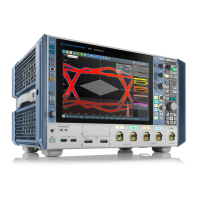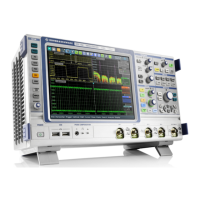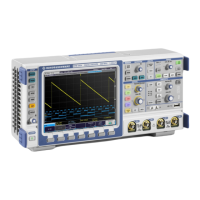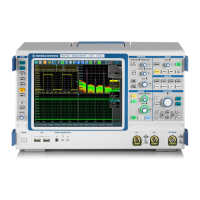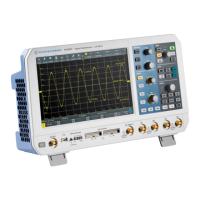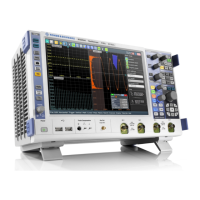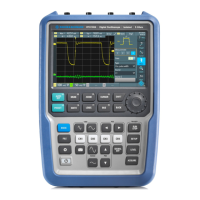Protocol analysis
R&S
®
RTP
788User Manual 1337.9952.02 ─ 12
● The MDIO protocol................................................................................................788
● MDIO configuration............................................................................................... 789
● MDIO trigger..........................................................................................................793
● MDIO decode results............................................................................................ 796
● Search on decoded MDIO data.............................................................................798
13.17.1 The MDIO protocol
MDIO is used for bidirectional transfer of control and status information between the
physical layer entity (PHY) and the station management entities (STA).
A major application of MDIO is fault detection by interrogating registers of physical
devices. Hence, MDIO serial bus visualization helps debugging new products by giving
developers a quick insight into the native data on the bus without using a special
decoder.
On physical level, MDIO is a clocked non-return-to-zero (NRZ) code similar to SPI.
According to the Ethernet standard, the protocol defines two threshold levels, 2 V and
0.8 V, which establish a hysteresis.
On logical level, MDIO is a fairly simple protocol with a fixed word length of 64 bits. The
structure of MDIO frames is shown in the following tables:
Table 13-25: MDIO frame structure according to Clause 22
Management Frame Fields
Frame PRE ST OP PHYAD REGAD TA DATA IDLE
WRITE 1...1 01 01 AAAAA RRRRR 10 DDDDDDDDDDDDDDDD Z
READ 1...1 01 10 AAAAA RRRRR Z0 DDDDDDDDDDDDDDDD Z
Table 13-26: MDIO frame structure according to Clause 45
Management Frame Fields
Frame PRE ST OP PRTAD DEVAD TA ADDRESS / DATA IDLE
ADDRESS 1...1 00 00 PPPPP EEEEE 10 AAAAAAAAAAAAAAAA Z
WRITE 1...1 00 01 PPPPP EEEEE 10 DDDDDDDDDDDDDDDD Z
READ 1...1 00 11 PPPPP EEEEE Z0 DDDDDDDDDDDDDDDD Z
POST-READ incre-
ment address
1...1 00 10 PPPPP EEEEE Z0 DDDDDDDDDDDDDDDD Z
The following abbreviations are used in the tables:
●
PRE = preamble, consisting of 32 logic "one" bits ("1...1")
●
PRE = preamble, consisting of 32 logic "one" bits ("1...1")
●
ST = start of frame code (2 bits), "01" for Clause 22, "00" for Clause 45, "0X" for
any, no other options permitted
●
OP = operation code or "OpCode" (2 bits). This is a frame type code specifying the
type of transaction.
MDIO (option R&S
RTP-K55)

